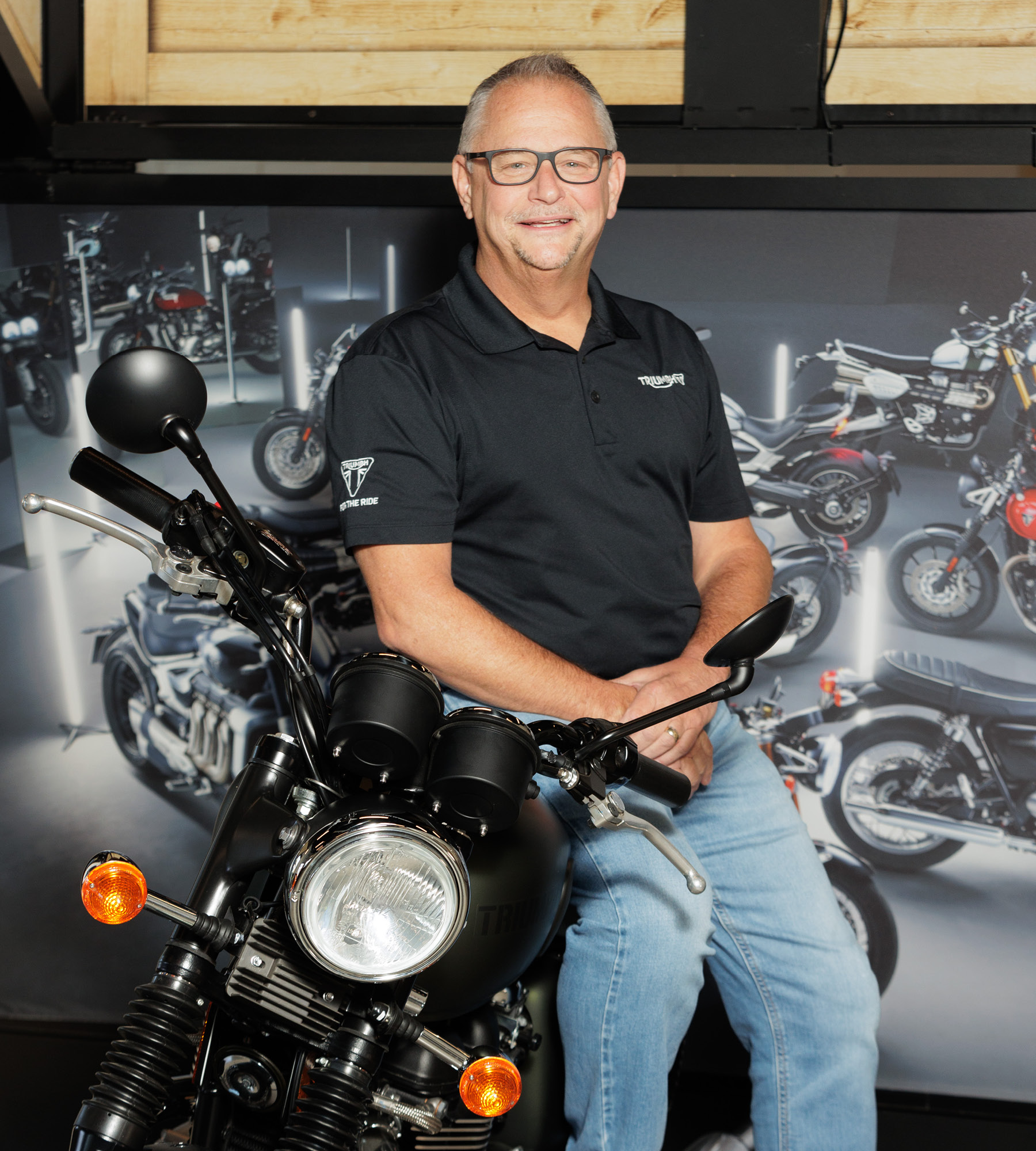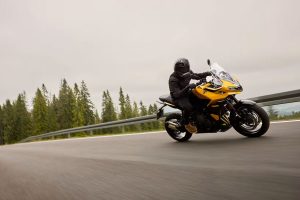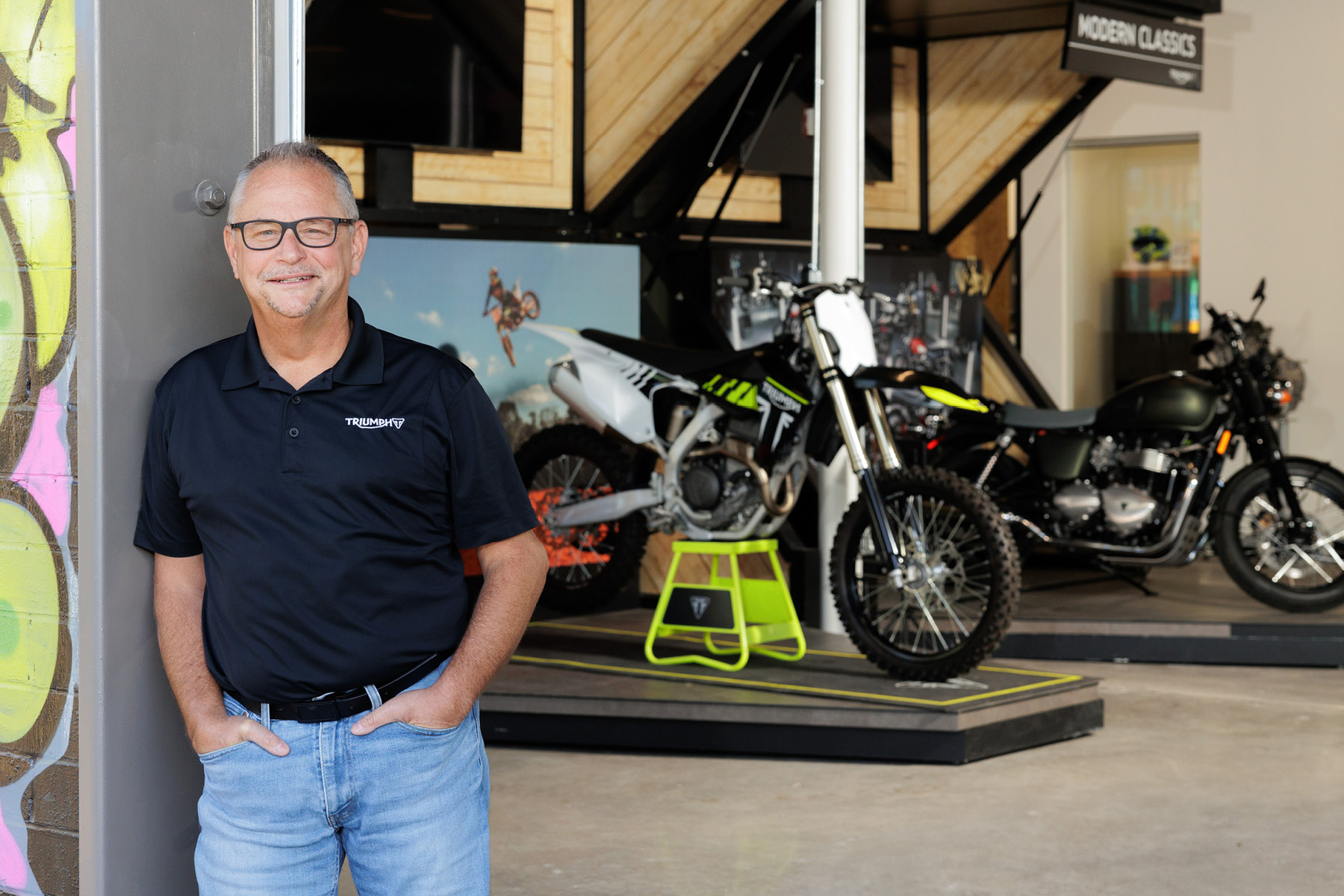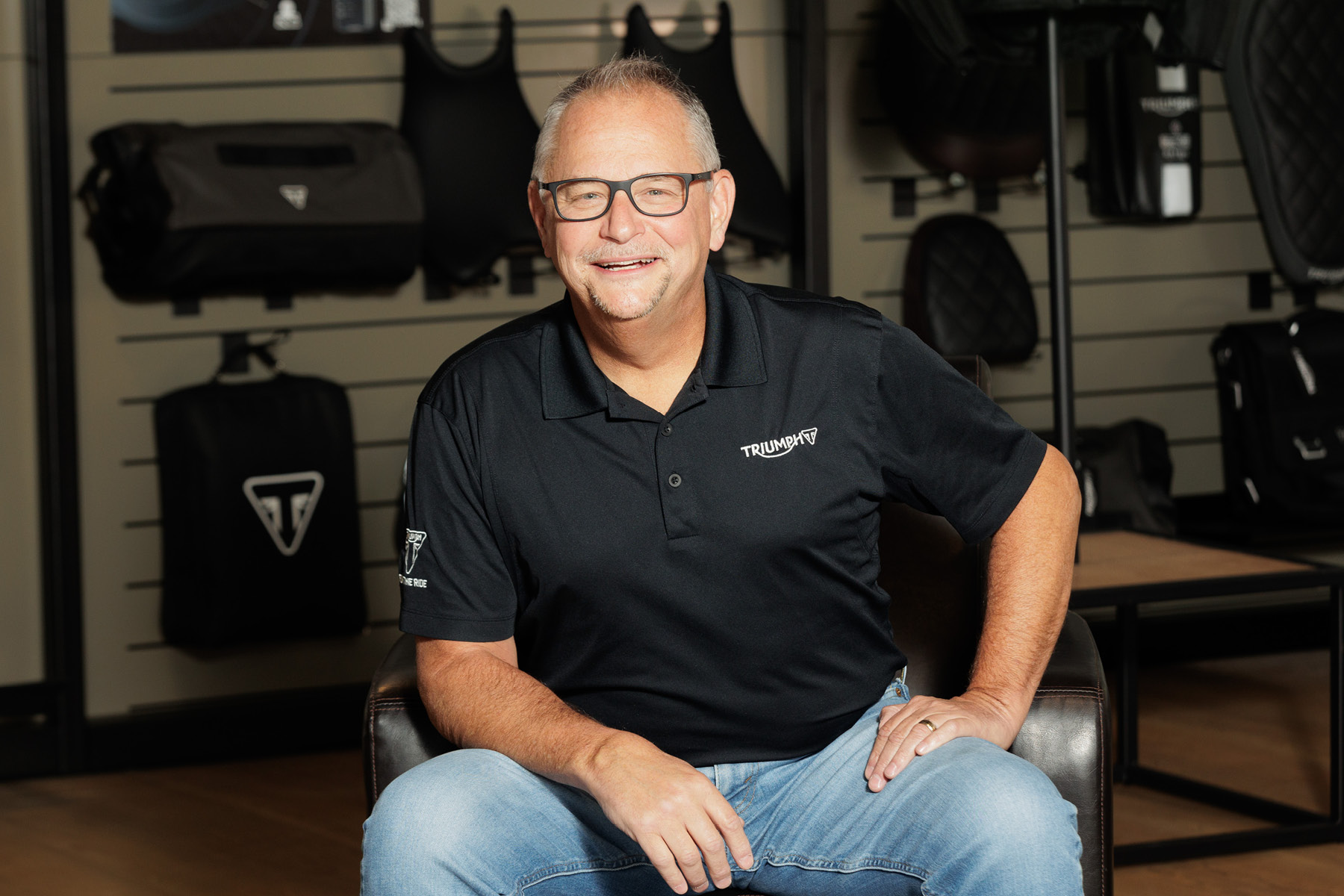Language
You can read the magazine in one of the following languages
Geolocation
You can read the global content or the content from your region


Eavesdrop on any watercooler conversation at Triumph’s Atlanta headquarters on any given day, and chances are the staff chatter will not revolve around politics, weather, sport or even – look away now, family members – spouses and children. The talk will be about bikes, glorious bikes.
“When I was running Suzuki, I would say 15 percent of my staff were brand advocates and riders, and the others were just employees,” says Rod Lopusnak, General Manager of Triumph Motorcycles North America.
“Here, 95 percent of our staff are absolute maniacs when it comes to riding motorcycles. In most cases, when they first come in, they’re letting you know that before the interview process even starts. It’s like, ‘All I’ve ever wanted to do is work for Triumph’, ‘My grandfather had a Triumph, my father had a Triumph’, ‘I rebuilt a Triumph in 1972’.
“When you have that core of people who just truly love the brand, it makes my life a lot easier.”
Passion is the fuel that powers the storied Triumph nameplate, a company that has built iconic premium motorcycles – and shaped their engineering and design evolution – for more than 120 years, after being established in Coventry, England, by German immigrant, Siegfried Bettmann.
Lopusnak himself began his career heading up dealerships in the New York–New Jersey area. He then spent two decades in management suites across Japanese brand Suzuki, before the lure of Triumph eight years ago proved irresistible.
“Starting in a dealership, it gives you a different perspective. We have an internal mission here to be dealer-first [Triumph currently has more than 205 dealers in North America]. These dealers have everything in their lives invested in these stores and truly they’re our first partner, right? We have to make the dealer comfortable with us as a business partner,” Lopusnak says.

“We have to make the dealer comfortable with us as a business partner.”
“If we build a better relationship at the start of the race than another brand, then probably the end result is going to be better for us. So now, prospective dealers are required to come in and spend an entire day here [in Atlanta], where they meet every department manager. Everyone spends about 45 minutes with them, giving an overview of the staff and how we conduct business.”
And if any dealers are still wavering at his point, Lopusnak always has an ace up the sleeve: “We’ll give them a Triumph to ride home. And you can be from Alaska; we’ll still pick it up. And even if you don’t want to be a dealer after that, that’s OK. You’re still going to get the Triumph experience. That’s how much we believe in the product.”
The first ever Triumph machine, produced under Siegfried Bettmann’s tutelage in 1902, was simply a bicycle fitted with a Belgian-made 2.2 horsepower Minerva engine. By 1937, the brand had built what is, to this day, still considered to be the definitive British motorcycle – the 498 cubic capacity (CC) Speed Twin, capable of 145 kilometers per hour, a mind-blowing speed for that era.
Perennial pop-culture kudos for the Triumph name was all but guaranteed after the TR6 650 Trophy bike ‘co-starred’ in the 1963 film The Great Escape alongside Steve McQueen; three years later, two Triumph 650 CC engines powered a successful world-speed record attempt by the Gyronaut X-1 streamliner.

After a brief speed hump in the road when the company folded in 1983, only to be resurrected by British entrepreneur John Bloor that same year, the brand has seen fortunes bloom; as of the start of September 2024, global sales have doubled since 2020, with a projected 125,000 units sold by the end of the full year.
Triumph’s masterstroke? Turning the heads of a younger demographic with the introduction of lower-powered, entry-level-friendly engines.
“We’ve taken the first leap into motorcycles below 500 CC. We’ve launched two new 400 CC models that are really going to change our brand forever, because the average age of the North American customer is 47 years old. We’re aging. We’re not quite as old as Harley-Davidson, but we’re getting there,” Lopusnak says.

“We’re not quite as old as Harley-Davidson, but we’re getting there.”
“So the company has put a lot of focus on how we create a younger customer base who can be involved in the brand for longer. If our average customer is 47, we’re missing that first 30 years of a true on-road motorcycle customer.”
Lopusnak is similarly energized by a breakthrough with the Motorcycle Safety Foundation in the United States, who, for the first time in Triumph’s history, has approved the brand’s bikes for use in rider training, potentially exposing the company logo to millions of teenagers over the coming years and decades.
Omens remain good across the breadth of the business, too. Triumph has a refreshed presence and valuable TV limelight in competitive motocross (complemented by a new TF250-X model that’s flying out of showrooms, and the patronage of one of the sport’s gods, Ricky Carmichael).
In 2026, the company is looking to offer customers a unique and premium Triumph experience where they will have the opportunity to personally collect recently purchased bikes, if they so wish, from its headquarters. Not to mention a link-up with motorcycle dealership consolidation company, Motos America, which continues to bear fruit.
That’s clearly action enough to lubricate office watercooler conversations for the foreseeable future.
“In our business, sales change everything,” Lopusnak says.

“Being distinctive, cool, authentic and premium – that’s how we keep the value of the brand.”
“There’s nothing more important than sales for a dealer or for us. But we always want to stay true to the core values of the company – being distinctive, cool, authentic and premium – that’s how we keep the value of the brand.
“We’re unique. Our dealers have to install our furniture, our flooring and our paint codes and they have to use our lighting, because whether you’re in Atlanta, Georgia or Tokyo, Japan, the proposition for the dealership is the same. So it’s not only about building the brand of the motorcycle; it’s about building the brand of the staff and building the brand for customers who walk in, so they have a premium buying experience.
“Of course, we want to grow like any other brand, but we want to do it consistently and properly. We’re not just trying to hit home runs and then strike out. We’re trying to have consistent growth and build it from the bottom up, but always having focus on the brand.”